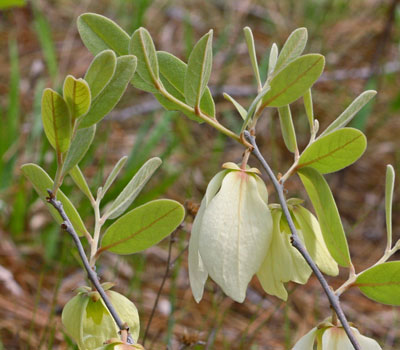Woolly Pawpaw
Asimina incana
Family: Annonaceae
Natural History

Woolly pawpaw flowering in Marion County | Photo credit: Mary Keim (Flickr ID Mary Keim) | Used under a Creative Commons license
Woolly pawpaw belongs to the Annonaceae family, which is known for having a distinct pungent smell when the leaves are crushed. The pawpaw habitat consists of well-drained sandy soils, longleaf pine-scrub oak ridges, old fields, and pine flatwoods where little or no saw palmetto occurs. It ranges from southeastern Georgia to central Florida.
Although some species of pawpaw have fragrant flowers, woolly pawpaw flowers smell like rotting meat. It is sometimes called polecat bush, and polecats are skunks! The flowers are attract blowflies and carrion beetles who pollinate them. Caterpillars of zebra swallowtail butterflies and pawpaw sphinx moths eat woolly pawpaw leaves. The plants often bear dried, brown clumps of old webbing and frass left behind by the previous season's caterpillars.
Historically the ripe pulp of the fruits was used by the early settlers to make yellow dye. It is part of the diets of raccoons, opossums, squirrels, bears, and turkeys.
